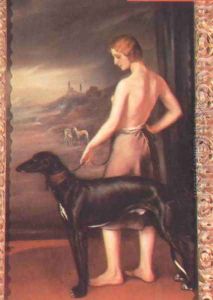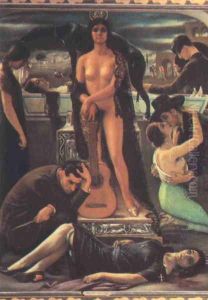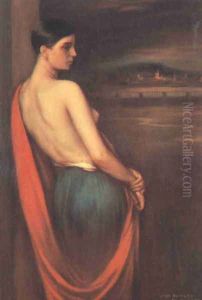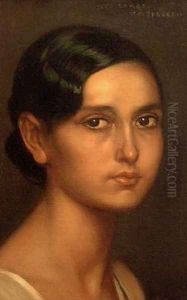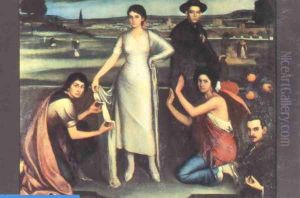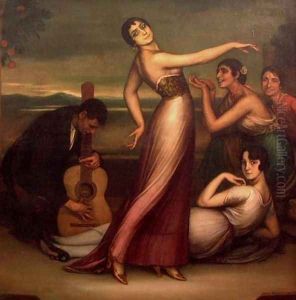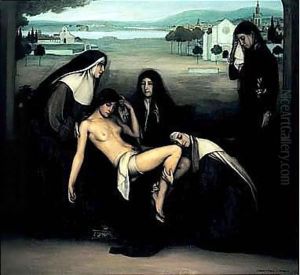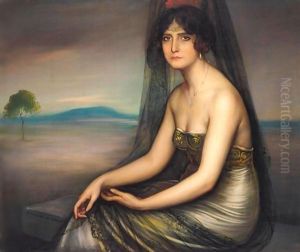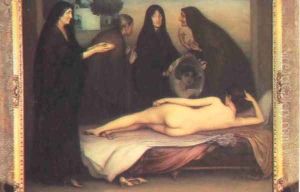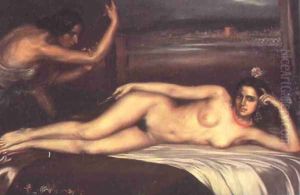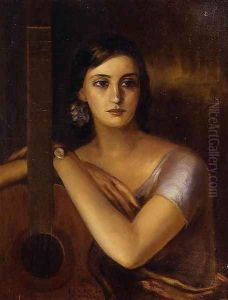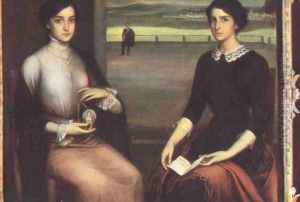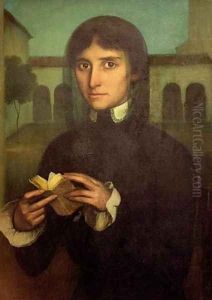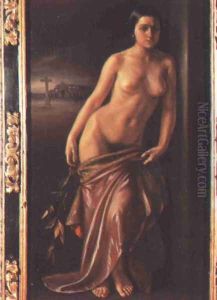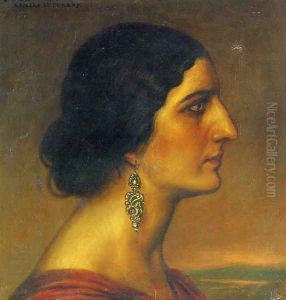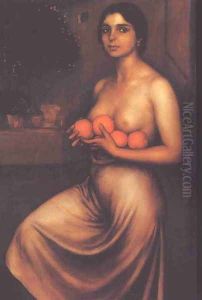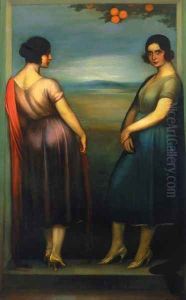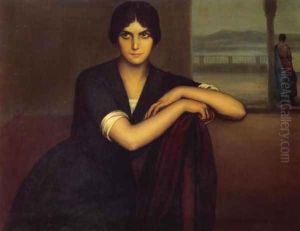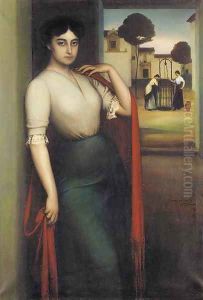Julio de Romero de Torres Paintings
Julio Romero de Torres was a prominent Spanish painter who was born on November 9, 1874, in Córdoba, Spain. He is best known for his symbolist and realistic works that often depicted traditional Andalusian motifs and themes. Romero de Torres was born into a family with strong artistic ties; his father, Rafael Romero Barros, was a painter and the founder of the Museo Provincial de Bellas Artes in Córdoba, which exposed him to the arts from an early age.
Romero de Torres began his formal art education at the School of Fine Arts in Córdoba and later continued his studies in Madrid. His work started to gain recognition in Spain, and he received various awards early in his career. His paintings were characterized by their portrayal of the female figure, often imbued with a sense of mysticism and sensuality. He mixed traditional elements with symbolist and modernist influences, creating a unique style that resonated with the cultural identity of Andalusia.
Throughout his career, Julio de Romero de Torres participated in numerous exhibitions and his work was celebrated both in Spain and internationally. He was also involved in the design of stained glass windows and the restoration of frescoes in his hometown of Córdoba.
Despite his success, Romero de Torres struggled with health issues for much of his life. He died on May 10, 1930, in Córdoba, at the age of 55. His legacy continues to be honored, and his works are still admired for their beauty and cultural significance. The Julio Romero de Torres Museum in Córdoba was established in his honor, preserving his memory and showcasing his contributions to Spanish art.
